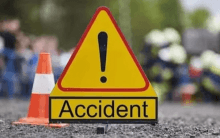A few earthquake-prone countries, including Japan, the United States, India, Mexico and Italy, have installed Earthquake Warning System (EWS) to detect earthquakes and alert the public of a potentially hazardous quake.
However, people from regions like the Indian Subcontinent where tremors take place at uncomfortable frequency due to movement of Himalayan plates can take extra precaution as not all can access to the government's EWS. It will also take time to reach the public, as information has to go through media like radio and television.
Here comes a need for small earthquake alarm devices that can be installed at homes, offices, shops, hotels, malls, schools etc to help save valuable seconds.
"As you know Earthquake has become a common phenomenon in Asia-Pacific region due to movement of the Himalayan plates. Here is a devices that can help detect earthquakes before the damaging waves hit your area, so you can vacate the premises well before time and avoid injuries, or worse," SafePlanet Innovations wrote to IBTimes in an email.
It went on to say that the technology works like a fire alarm, warning people of an earthquake 1-40 seconds prior, and that it would be good to instal such devices in a place like Delhi, which is on Zone 4 (onw one of the most quake-prone ones in the country).
SafePlanet Innovation Earthquake Alarm is one such device that can detect quakes several seconds before it strikes. It is currently available on online retail stores like Flipkart and Snapdeal. Other devices like the Quake Alarm and Grillo Active are also available in the market.
However it may be noted that an earthquake can't be predicted, and the United States Geological Survey (USGS) has stated on its website that it is very unlikely scientists will ever be able to predict it.
"Scientists have tried many different ways of predicting earthquakes, but none have been successful. On any particular fault, scientists know there will be another earthquake sometime in the future, but have no way of saying when it will happen," said the USGS.
(Image Source: SafePlanet Innovations)















